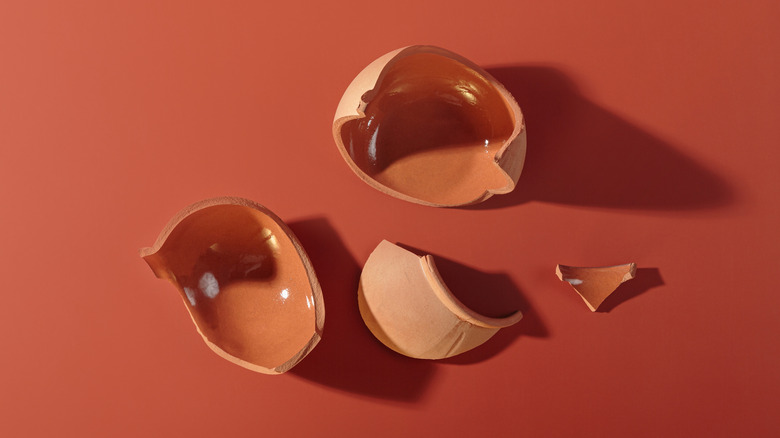The Best Glue For Ceramic Repair
When it comes to ceramic repair, you have options — those options, however, boil down to what sort of ceramic you're working with and your specific repair goals. For fine ceramic items, such as pottery, knickknacks or dishes, epoxies and cyanoacrylate-based super glues are your best bet.
Epoxy
In general, epoxies provide a strong, void-filling bond for porous ceramic. Off-the-shelf epoxy glues typically include a hardener and a resin, which you must mix during application. While virtually all epoxies work via this two-step process, some focus on filling while others excel at mending. Check the package for details and seek the former option to fill in chips or shallow cracks and the latter to bond broken ceramic pieces.
Epoxies often require far longer to dry and set than super glues, and make for thicker, more noticeable filling lines. On the upside, they offer greater temperature resistance and generally resist more pressure than super glues.
Super Glue
Common super glues made from the cyanide-derived cyanoacrylate make for an easier application process, as they air-dry more quickly than epoxies and don't require mixing. Unlike epoxies, super glues do not fill voids; for lightweight and nonporous ceramic repair, this option works best when you have all existing pieces and need to create a bond in a thin space, such as fitting together the pieces of a broken ceramic statue.
While super glue offers strong pulling resistance, epoxy is a more durable choice when repairing ceramics that will receive stress or pressure from other angles, such as downward force.
Warning
Epoxies, super glues and other adhesives vary widely between brands. Always read and closely follow any instructions or warnings provided by the product's manufacturer.
Fixing Your Flooring
Because ceramic, non-porcelain tile features a porous composition, epoxy glue serves best for repairing chips and breaks in flooring tile.
In addition to general-purpose epoxies that feature a resin and hardener, various manufacturers offer adhesives that cater specifically to ceramic tile repair. These epoxy-resin-based liquid polymers offer a setting time that is more akin to super glue, and may also bond to nonporous surfaces, such as wood. This makes them a go-to product for basic tile resetting tasks, such as a loose countertop tile.
Some ceramic adhesives are formulated for indoor application while others are made to withstand outdoor elements. Still others are dishwasher safe, making them a viable option for dinnerware repair. No matter which option you choose to mend your ceramic, always take a close look at the package before purchasing. Each product details its compatible surfaces, drying times, drying opacity, recommended application areas and instructions. For ceramic that sticks, know what you're buying before you get down to gluing.
Picking Up the Pieces
While a simple hairline crack or a clean two-piece break makes for a straightforward filling or mending process, ceramic that has shattered into multiple pieces poses a more complex problem. Once you've settled on the right adhesive for the job, follow this process for painless repair:
Things Needed
-
Bucket
-
Sand
-
Scrap wood or tile
-
Popsicle stick
-
Self-gripping tweezers
1. Secure the Piece
If you have a large, intact piece of ceramic with smaller broken bits, fill a bucket with sand and stick the larger piece in the sand to free up your hands while you work.
2. Mix the Epoxy
When working with epoxy, combine the hardener and resin a bit at a time — you'll only have about three minutes to work with the combined adhesive before it dries. Use a piece of scrap wood or tile as a mixing pallet and an ice cream stick as a mixer.
3. Get a Grip
Use self-gripping tweezers to hold each broken piece of ceramic. Apply the epoxy or super glue to the end of an ice cream stick, and dab the adhesive onto one of broken edges, then press it into the corresponding edge with light pressure. Hold each piece in place until it's stable, then release it. Allow the adhesive to dry completely according to the glue manufacturer's instructions.
Tip
If your ceramic piece is missing large chunks, use a polyester resin filler to build the missing portions. Once dry, you can sand it down for fine blending, match it to your piece with acrylic paint, and seal it with a spray acrylic.
